Do you ever feel like time and space just seem to vanish when it comes to managing your iCloud storage? You’ve deleted photos thinking it will free up space, but before you know it, the same warning about full storage is back. What’s the deal with this perplexing issue of iCloud storage being full despite deleting photos? It turns out there are a few surprisingly simple explanations for why this happens. Read on to discover why your iCloud storage is still full after removing photos.
Why can iCloud storage be full after deleting photos?
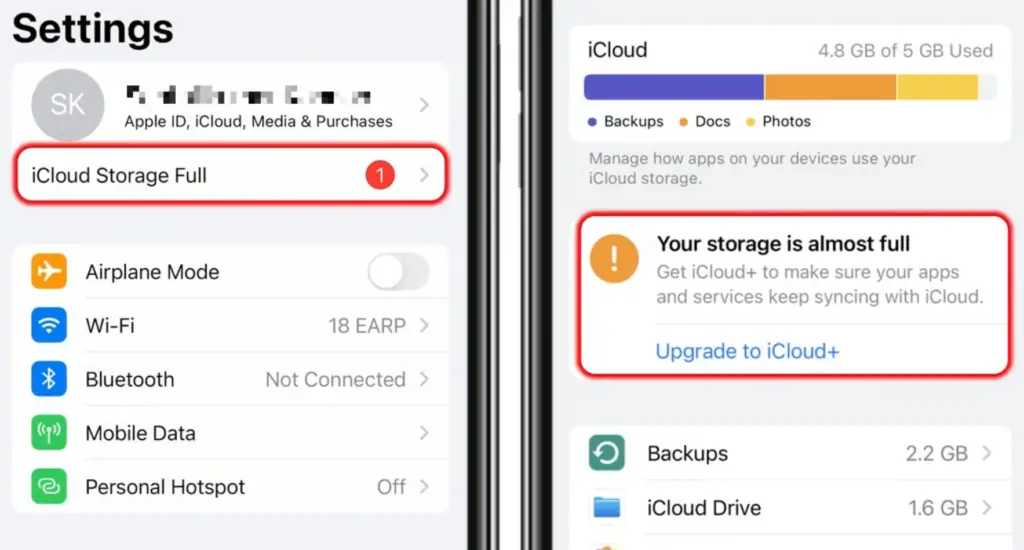
Additionally, other files such as documents, contacts, music, etc. can also take up storage space which could cause it to become full even after deleting photos.
To free up more space on iCloud, users should look at their current storage usage and decide what can be removed or stored locally elsewhere. For example, large videos are better backed up offline rather than in the cloud so they don’t take up valuable iCloud storage. Additionally, older photos can often be deleted after they have been backed up as well. By taking these steps, users should be able to free up enough space in their iCloud account to store the content they need.
If these steps do not help free up additional iCloud storage space, then upgrading to a larger plan may be necessary. Apple offers several different plans ranging from 50GB up to 2TB of storage with prices that vary depending on your needs. By upgrading to a more suitable plan, users should be able to ensure that their iCloud account has plenty of storage for whatever purposes they need it for.
How to free up iCloud storage when iCloud storage is full
Solution 1. Manage/delete iCloud data
The first step to freeing up space on iCloud is to manage the data stored in it. To do this, users can access their iCloud settings from a Mac or iOS device and delete any unneeded photos, documents, contacts, music, etc. that are taking up valuable storage space. Additionally, users should make sure that they are not backing up unnecessary items such as videos which could take up a lot of space on iCloud.
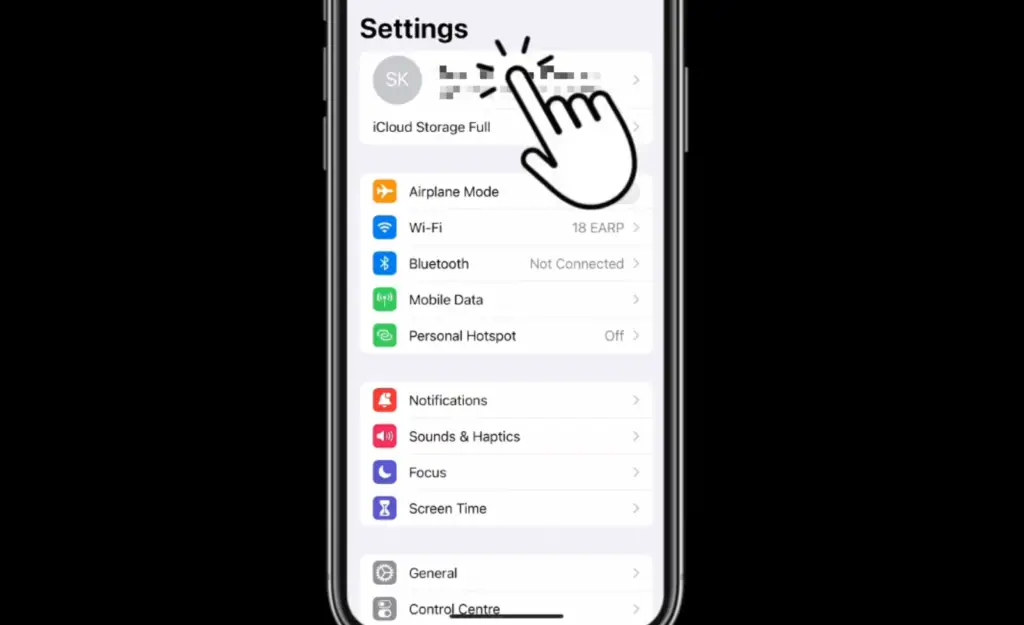
Solution 2. Upgrade your iCloud plan
If managing/deleting files does not help free up enough storage space in your iCloud account then users may need to upgrade their plan to a larger size. Apple offers several different plans ranging from 50GB all the way up to 2TB with prices varying depending on the size of the plan. By upgrading to a larger plan, users should have more than enough storage space for all their photos, documents, music, etc.
Solution 3. Delete redundant photos on iCloud
Another way to free up iCloud storage is by deleting redundant photos. iCloud often stores multiple copies of the same photo which can take up a lot of space in the cloud. To reduce this, users should access their photo albums and delete any duplicates that have been backed up.
Solution 4. Remove Messages, Voice Memos & Other Data from iCloud
Additional items such as messages, voice memos, and other data can also take up a lot of storage space in the cloud. To free up this space, users should go through their messages and delete any unneeded conversations or voice memos that they no longer need. Additionally, any other data stored in the cloud such as contacts, calendars, etc. should be reviewed and deleted if necessary.
Solution 6: Backup iPhone before cleaning iCloud to prevent data loss
Before deleting any data from iCloud, it is important to make sure that the data is backed up on a local device or other storage solution. This will ensure that users do not lose any valuable information in case of an unexpected issue. Additionally, if users are backing up their iPhone onto iCloud then they should consider backing it up to iTunes or a computer before cleaning out their iCloud account. This way, if anything were to happen while they are freeing up space on iCloud, they would still have all of their data saved elsewhere [1].
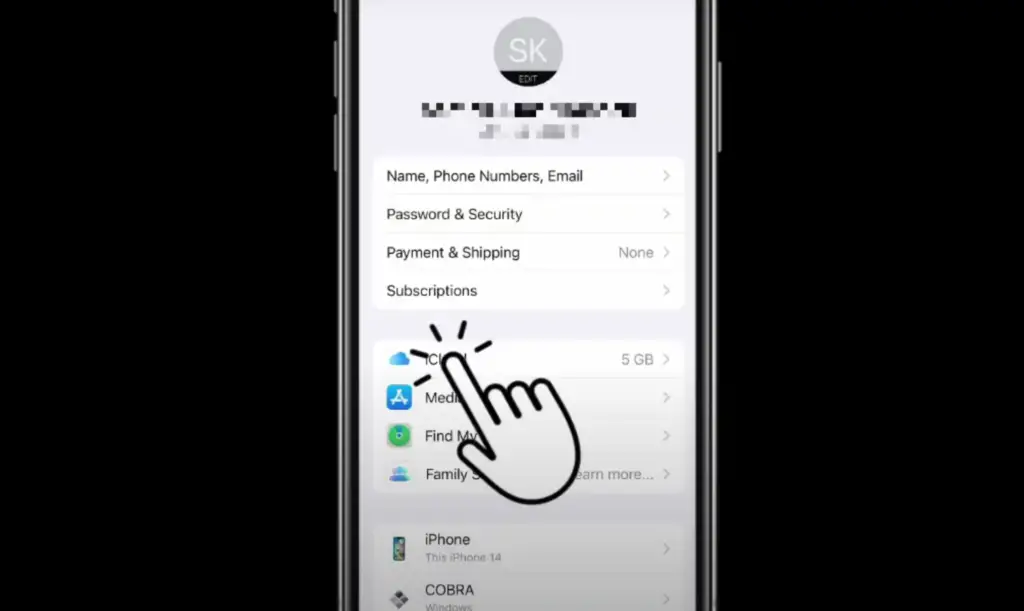
iPhone Photos Using Space Even After Deleting Them? 10 Fixes
Check the Recently Deleted Folder
When you delete photos from the Photos app on your iPhone, they don’t go away completely. Instead, they are moved to a Recently Deleted folder where they stay for 30 days before being permanently deleted. This gives you a chance to recover any photos that were accidentally deleted.
To check the Recently Deleted folder, open the Photos app and tap the Albums tab at the bottom. Scroll down until you see Recently Deleted and tap it. You should be able to view all of the photos that you previously deleted in this folder – if there is space still being used up on your device, these are likely what is taking it up.
If you want to keep any of these photos, select them and tap Recover. This will move them back to the All Photos album and you can delete them again if you wish.
Restart Your iPhone
Sometimes, a simple restart can help clear up some of the space being used on your phone. To restart an iPhone 7 or newer:
- Press and hold the side button until you see the “slide to power off” message.
- Swipe to turn off your phone.
- Wait for 30 seconds and then press and hold the side button again until you see the Apple logo.
The process is slightly different for earlier models – find out how to restart your specific device with this guide from Apple.
Update to the Latest iOS Software
If you’re running an older version of iOS, updating to the latest one can help free up some space on your device. To update your iPhone:
- Go to Settings > General > Software Update.
- Tap Download and Install if a new version is available.
Clear Out Your Safari Cache
Your Safari browser stores information such as website cookies and cached images and files to make loading websites faster. However, this can take up a lot of space over time. To clear out the cache in Safari:
- Go to Settings > Safari.
- Tap Clear History and Website Data and then confirm when prompted.
This will delete all your browsing data – if you want to keep any of it, you can turn off the features individually.

Uninstall Unused Apps
If there are any apps on your iPhone that you no longer use, consider deleting them to regain some space. To uninstall an app:
- Press and hold its icon until a menu appears.
- Tap Delete App and then confirm when prompted.
You can always reinstall the app from the App Store if you change your mind later on.
Disable iCloud Sync (After Completing a Backup)
This can take up a lot of space on your device if you have a limited iCloud storage plan. To make sure this isn’t the cause of your issue:
- Go to Settings > Your Name > iCloud.
- Tap Photos and then disable the switch next to iCloud Photos.
It’s important to note that before disabling this option, you should make sure you have a complete backup saved as disabling it will delete any photos or videos stored in iCloud.
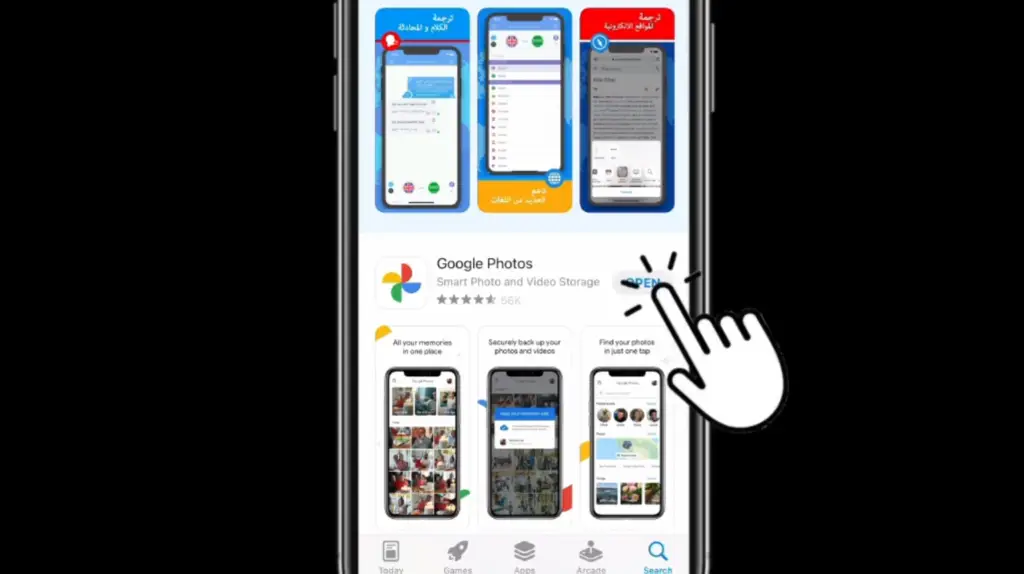
Turn Off Live Photo Capture
Live Photos are one of the more popular features on iPhones – they capture 1.5 seconds of video and sound around each photo you take to create a dynamic image. However, they can also take up a lot of space on your device. To turn off Live Photo capture:
- Open the Camera app and tap the circular icon at the top (it should be yellow when enabled).
- Tap the switch next to Live Photos to turn it off.
Optimize iPhone Photos for Storage
Your iPhone’s Photos app has a handy feature called Optimize iPhone Storage that can help you reclaim some space. This feature reduces the file size of photos and videos so they take up less space, while still maintaining their original quality. To enable this:
- Open the Settings app and tap Photos.
- Tap Optimize iPhone Storage and then confirm when prompted.
Now, all your photos and videos will be stored in a smaller file size – making them easier to manage and freeing up more storage on your device.
Factory Reset Your iPhone
If all else fails, a factory reset can help you reclaim some space on your iPhone. Note that this will delete all data and settings from the phone, so be sure to back up before doing a reset. To do this:
- Go to Settings > General > Reset.
- Tap Erase All Content and Settings and then confirm when prompted.
This will delete everything except for the iOS software – once it’s complete, you can set up your device again as new or restore from a recent backup.

Contact Apple Support
If none of the above steps help, you may need to contact Apple for further assistance. They can run diagnostics on your device and recommend any other steps that might be needed to resolve the issue. You can find their contact information here: https://support.apple.com/en-us/HT201232.With these tips, you should have a better idea of how to restart your iPhone and free up some much-needed storage space [2].
How to Manage iPhone Storage in the Future Better?
- Think Ahead: Consider the amount of storage you will need when planning your next iPhone purchase. If you are a frequent user of photos, videos, and music files, look for an iPhone that offers more space.
- Regularly Delete Unused Apps: Uninstall or delete any apps that you no longer use to free up some extra space on your device. Also, check to see if there is a way to reduce the size of an app in its Settings menu.
- Use iCloud Storage to Back Up Data: iCloud lets you store all kinds of data (photos, documents etc.) online so it doesn’t take up valuable local storage on your device. Take advantage of this by regularly backing up your data to iCloud.
- Move Photos from Your Phone to a Computer: Transferring photos to a computer or external hard drive is one of the best ways of freeing up space on an iPhone. You can use iTunes or third-party apps like Dropbox and Google Drive to accomplish this task.
- Clean Up Your Messaging App: Messages take up quite a bit of storage, so be sure to delete any unwanted pictures, videos, GIFs etc., that have been sent through your messaging app.
- Offload Unused Apps: With iOS 11, you can now choose to ‘Offload Unused Apps’ in the Settings menu. This will remove the app from your device but save all of its data, allowing you to reinstall it whenever needed in the future.
- Regularly Clear Your Cache: Clearing your cache is a great way to free up some space on your device. To do this, go to Settings > General > Storage and select ‘Clear Cache’ to clear out any unnecessary data that has been stored on your phone.
- Invest in an External Storage Device: If you need more than just a few gigabytes of storage space, consider investing in an external hard drive or flash drive for additional storage capacity. They are relatively inexpensive and can be used with computers as well as iOS devices.
- Take Advantage of Compression Apps: There are several apps available that allow you to compress media files (like photos and videos) so they take up less storage space on your device. These apps are easy to use and can help you free up a lot of space quickly.
- Monitor Your Device Storage: Finally, be sure to regularly monitor the amount of storage space on your device by going to Settings > General > Storage. This will show you how much storage is left so that you can adjust accordingly if needed.
By following these simple steps, managing iPhone storage should become more manageable in the future. Having adequate storage space allows your device to run optimally, which is essential for staying connected while on the go!
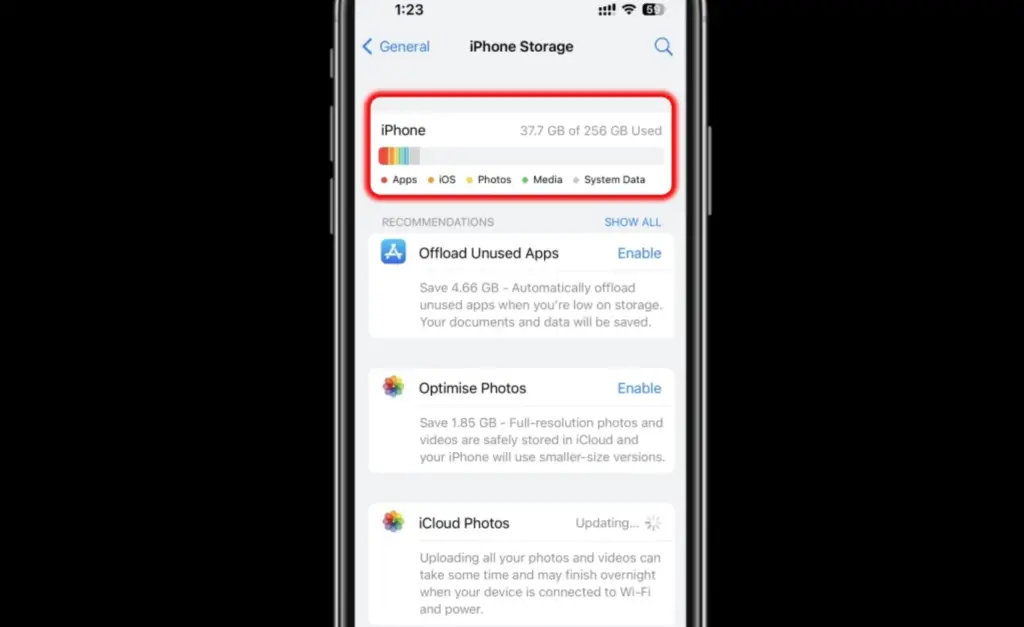
FAQ
Why is my iCloud storage not going down when I delete photos?
When you delete photos from your iCloud storage, they are not permanently erased. Instead, they will remain in the Recently Deleted folder for up to 30 days. After that time, those photos will be flushed out of the system and no longer be included in your iCloud storage count. To permanently delete them, you must go to the Recently Deleted folder and manually select the pictures you want to erase.
If you’re still having trouble with managing your iCloud storage space after taking these steps, contact Apple Support for assistance. They can help you troubleshoot any underlying issues which might be causing this issue and restore some of your iCloud storage space.
Does iCloud sync across all devices?
Yes, iCloud will sync data across all of your Apple devices that are connected to the same Apple ID. This includes photos, music, contacts, notes, reminders, and more. The benefit of this is being able to access the same content on all of your devices without having to manually send them between each one. All you need to do is make sure that you have enabled iCloud synchronization on your device settings for the data type you want to sync. Once enabled, any changes made will be automatically synced between all of your Apple devices.
Can I share my iCloud storage with family members?
Yes, it’s possible to share an existing iCloud storage plan with your family members. To do this, you will need to set up Family Sharing through iCloud on your Apple devices. This will allow you to share content and storage space between the members of your family. By doing this, each person can access the same content without needing to purchase a separate plan.To learn more about setting up Family Sharing with iCloud, please refer to Apple’s official support documentation.
Can I upgrade my iCloud storage plan?
Yes, it’s possible to upgrade your iCloud storage plan at any time if you feel that your current plan is not sufficient for all of your needs. All you need to do is go to Settings > iCloud > Storage & Backup and select a different subscription from there. Depending on the plan you choose, you can get up to 2TB of storage space.
How do I free up space on iCloud after deleting photos?
If you have deleted photos from your iCloud storage but are still seeing high usage, it may be because the photos are still stored in the Recently Deleted folder. To permanently delete those photos and free up space, you must go to the Recently Deleted folder and manually select them to erase. Once done, they will no longer take up any of your iCloud storage space.
It’s also important to note that any backups or other data stored in your iCloud account will also count against your total allocated storage space. To free up more space, you can try deleting redundant backups or disabling unnecessary applications from backing up their data to iCloud.
Why does my iCloud storage say full even after deleting photos?
If your iCloud storage still says full even after deleting photos, it could be because those pictures are still stored in the Recently Deleted folder. As previously mentioned, photos that are deleted from your iCloud will remain in this folder for up to 30 days. To permanently delete them and reduce your storage usage, you must manually select each one to erase from the Recently Deleted folder.
Can I access my iCloud data from a different device?
Yes, you can access your iCloud data from any device that is connected to the same Apple ID. You will need to make sure that you have enabled synchronization for the type of content that you want to access in the Settings app on each device. Once enabled, all changes made to your iCloud content will be synced between devices automatically.
For example, if you have photos stored in your iCloud and enable synchronization on another device, those pictures will be accessible from both devices without needing to manually transfer them between each one. The same applies to other types of content such as contacts, notes, reminders, music, and more.
Why is my iPhone not deleting photos?
If your iPhone is still showing storage full even after deleting photos, it could be because those pictures are still stored in the Recently Deleted folder. As previously mentioned, photos that are deleted from your iCloud will remain there for up to 30 days before being permanently erased. To reduce your storage usage and delete those photos permanently, you must manually select each one to erase from the Recently Deleted folder.
It’s also important to note that any backups or other data stored in your iCloud account will also count against your total allocated storage space.
Finally, if you have large files such as videos or music stored on iCloud, these will also take up a lot of space. If you don’t need them anymore, it’s best to delete them or move them to another storage service.
How to choose the right iCloud storage plan?
When choosing an iCloud storage plan, it’s important to consider what type of content you need to store and how much of it there is. Different plans have different limits on the amount of storage space available, so make sure that you choose one that suits your needs.
You should also take into account any other data stored in your iCloud account such as backups or applications which could take up more space than expected. If you find that a certain plan is not sufficient for all your needs, then you can always upgrade to a larger package at any time.
Finally, if you are sharing an Apple ID with someone else, it may be worth considering getting a family plan so that everyone can get their own allocation of storage space. This way, you can avoid any potential conflicts over who gets to use the most storage.
How to use iCloud storage efficiently?
To use iCloud storage efficiently, it’s important to ensure that you are not storing redundant files or applications which could be taking up unnecessary space. You should also try to delete photos and other content from your account once they are no longer needed to free up more space.
It’s also worth considering using other cloud storage services such as Google Drive or Dropbox for any large files such as videos or music which could take up a lot of space on your iCloud account. This way, you can keep all the data that you need without having to worry about running out of storage space.
What is the best way to keep my iCloud data safe?
The best way to keep your iCloud data safe is by regularly backing up your device. This will ensure that all of your important information is stored securely in case something happens and you need to restore it. You should also make sure that you have enabled two-factor authentication for your Apple ID, which will add an extra layer of security and protect any sensitive information stored on your account.
How to delete photos from iCloud?
If you want to delete photos from your iCloud, it’s important to note that they won’t be deleted completely until after 30 days. To delete them sooner than that, you can go into the Recently Deleted folder and manually select each one to erase from there.
It’s also worth considering whether you need all of the data stored in your iCloud account or not. If any redundant files or applications are taking up unnecessary space, then it might be best to delete these too so that you can free up more storage for other content.
Useful Video: How to Free Up iCloud Storage (& Never Worry About It Again)
Conclusion
Is iCloud storage full after deleting photos? iCloud storage remains full until you purchase a larger plan or delete more files from your device. If you’re running out of space, it’s best to start by sorting through old photos that are not needed and deleting them from your iCloud account. In addition, there are other options such as selecting smaller file sizes for photos uploaded to iCloud or using external cloud storage services such as Google Drive and Dropbox instead of relying on the limited free storage that Apple provides with each user’s iCloud account. By taking proactive steps, you can ensure that your iCloud storage does not become full after deleting photos.
References
- https://www.ubackup.com/phone-backup/my-icloud-storage-is-full.html
- https://www.makeuseof.com/iphone-photos-space-after-deleting-fixes/





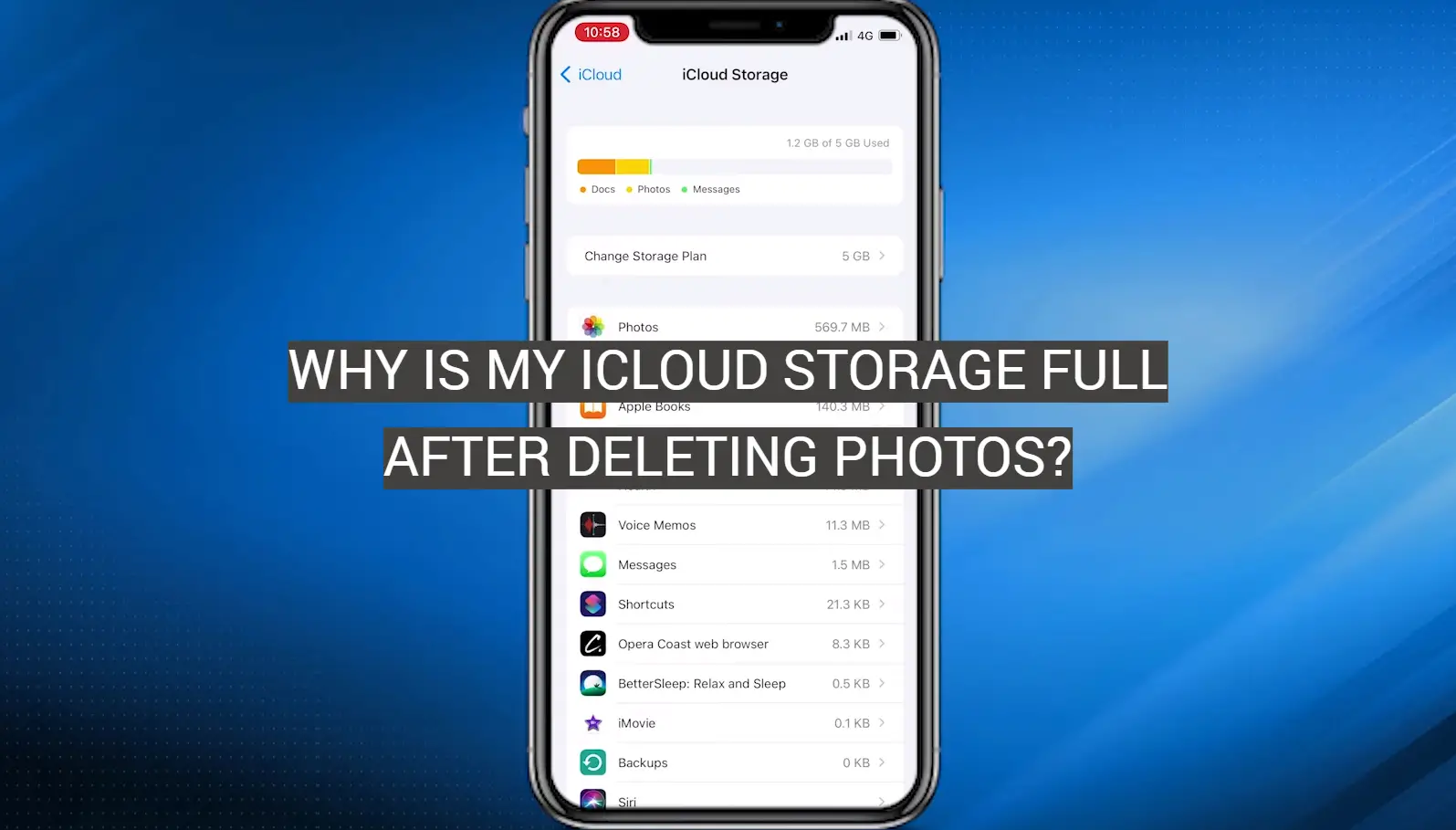


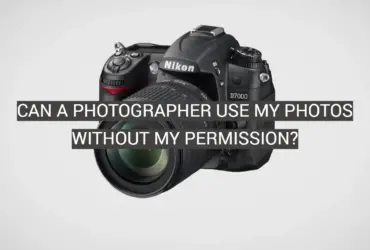



Leave a Reply